When was the last time that you felt as though a character in a story (whether that be from a book, movie, or TV show) was one of your closest friends? Where you felt like you’d been with them their whole lives, watched them grow, watched them struggle, watched them suffer through all their trials and tribulations.
As storytellers, isn’t one of our biggest goals to create a character that people feel is truly real? Truly authentic? We hope to create characters that readers will love, characters that they’ll follow to the ends of the earth, characters that will truly touch their hearts and minds and remind them of what living is all about.
But how do you do that, as a storyteller? How do you create someone your readers can relate to, someone they can sympathize with, someone they can connect with at an incredibly deep level?
BY SHOWING CHARACTER CHANGE
While we may argue whether or not it’s possible for people to change, or whether or not characters should change, the fact of the matter is this…
Why?
Because deep inside, we all like to believe that we too can change. That we too can live through tremendous suffering and come out as a better, wiser version of ourselves.
This brings me to the movie in discussion today: The Shawshank Redemption. Today, I’ll be discussing one technique storytellers use to convey character change.
That technique is called…
REPEATED IMAGERY
(WARNING: SPOILERS AHEAD)
One of the most emotional moments for me in The Shawshank Redemption was a moment near the end of the movie, when Red echoed a phrase Andy once said to him before he escaped Shawshank prison, “Get busy living, or get busy dying.”
To me, this encapsulated the theme of the entire movie. All throughout the film, we follow the voice and the thoughts of Red. We first see Red sitting before a small group of well-dressed professionals who are there to evaluate his status and determine whether or not he’s going to be granted parole.
That’s the first image I want to focus on.
Red and the Parole Board: An Instrument for Character Change
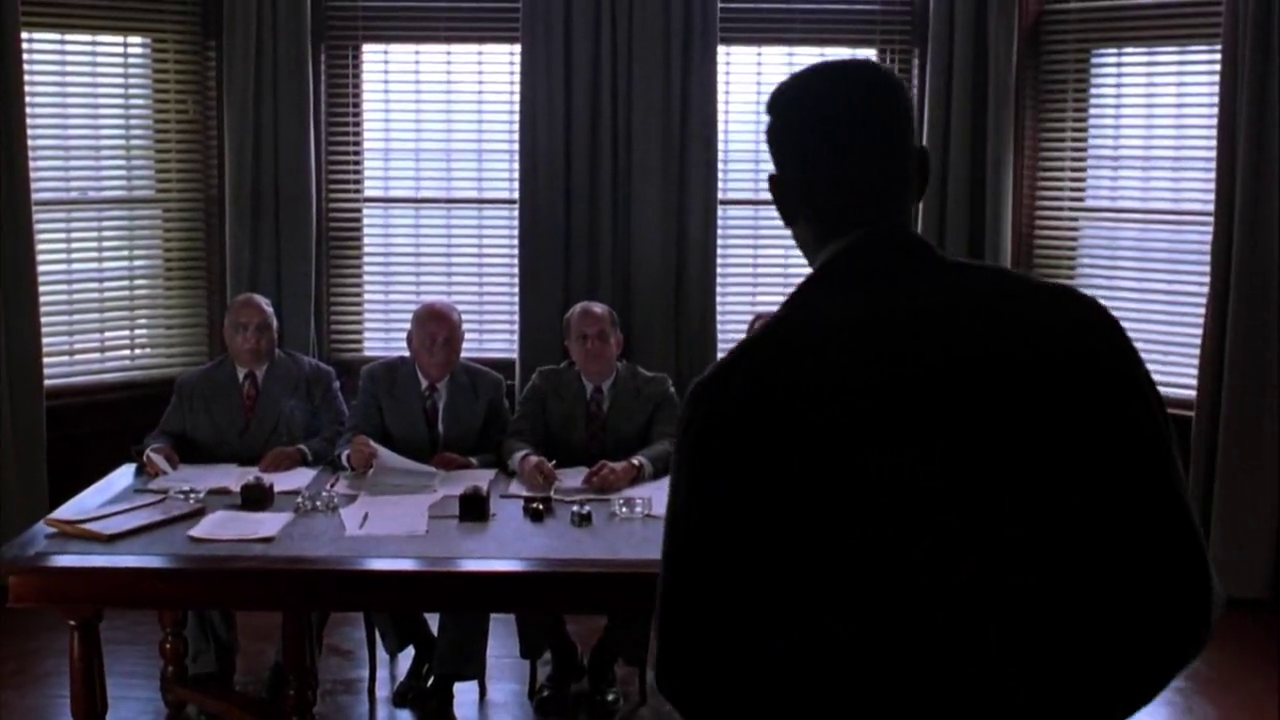
Nothing makes the audience realize the changes in a character more than when they find that same character standing in a similar situation he found himself in at the beginning of the story. In the case of The Shawshank Redemption, the change is most noticeable when Red walks into this room with a group of experts to discuss the possibility of parole.
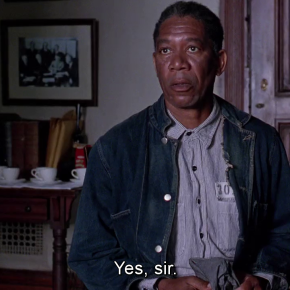
The first time we see Red walk into this room, his reaction, his speech, and his facial expression is one of fear and nervousness. He’s intimidated. His freedom is dependent on whether or not these people like him, and like the answer he gives to their question. He shifts his weight from side to side. His eyes dart back and forth between his judges. When he’s asked to sit, he seems jumpy and tense.
Finally, he’s asked a question, “You feel you’ve been rehabilitated?”
Red’s response here, at the beginning of the movie reflects his inner turmoil. His body language gives him away, and makes it look as though he’s lying, or just giving them the answer that they want to hear. And of course he does; he’s been at Shawshank for 20 years. He wants to leave the prison.
Compare that to the end of the film, after 20 more years in prison, after so many more trying, joyful, and tiring experiences have happened to him and his friends. When we see Red enter that room again. He’s calmer now, more certain of himself. He’s old. He’s tired. He’s had it with these reviews. He feels that they’re merely for show. Most importantly, he’s no longer afraid or nervous.
This is where we can directly spot character change.
Then comes the question, “Do you feel you’ve been rehabilitated?”
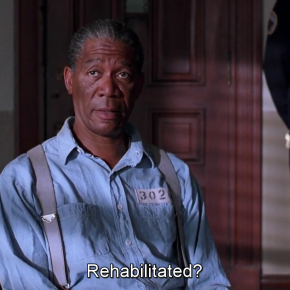
“Rehabilitated?” he asks, and then goes on to share what he really thinks of the idea of rehabilitation. He does it with more wisdom and experience, more calm and grace that makes his reviewers really ponder on what it is he’s saying.
In the end, Red shoves the word right back in their face.
“What is it you really want to know?” he asks, and begins to explain himself—his thoughts, his feelings. He exposes the self-righteousness in his judges’ hearts, and ends up getting approved for parole because of it. When he does, we, the audience, feel a great sense of relief.
Red went from being a person who was afraid of authority, afraid of what other people thought of him, afraid of judgment, to one who was secure within himself.
And the best way we, the audience, could have recognized that was through the very distinct differences between the two times he’s shown in that room. It’s perfect because it helps the audience truly experience the passage of time, and what it does to people. It shows true character change.
It summarizes the entire journey that the audience went through with the character, and consolidates it into a single image and scene. It’s incredibly simple! And yet, so difficult to apply.
K.M. Weiland, though, does a beautiful job of explaining how you can do it in this blog post. And if you want more of her tips on how to use great literary devices to better your story structure, just click here. Or buy her book Structuring Your Novel.
Red and Brooks: Foreshadowing a Possibly Grim Future
A second way to use repeated imagery to create an emotional reaction in your audience is to use it as a way to predict a character’s future. This is seen in Shawshank when we follow the story of what happened to Brooks once he was given parole halfway through the movie.
Brooks first loses it in the library, and threatens to kill Haywood just so that they would keep him inside the prison. Everyone talks about it, and Red explains just what it is Brooks is thinking. Brooks has been institutionalized, Red explains. He’s been inside the prison his entire life. Inside it, he’s an important man. He has a role to play. He’s valued. Outside it, he’s nobody.
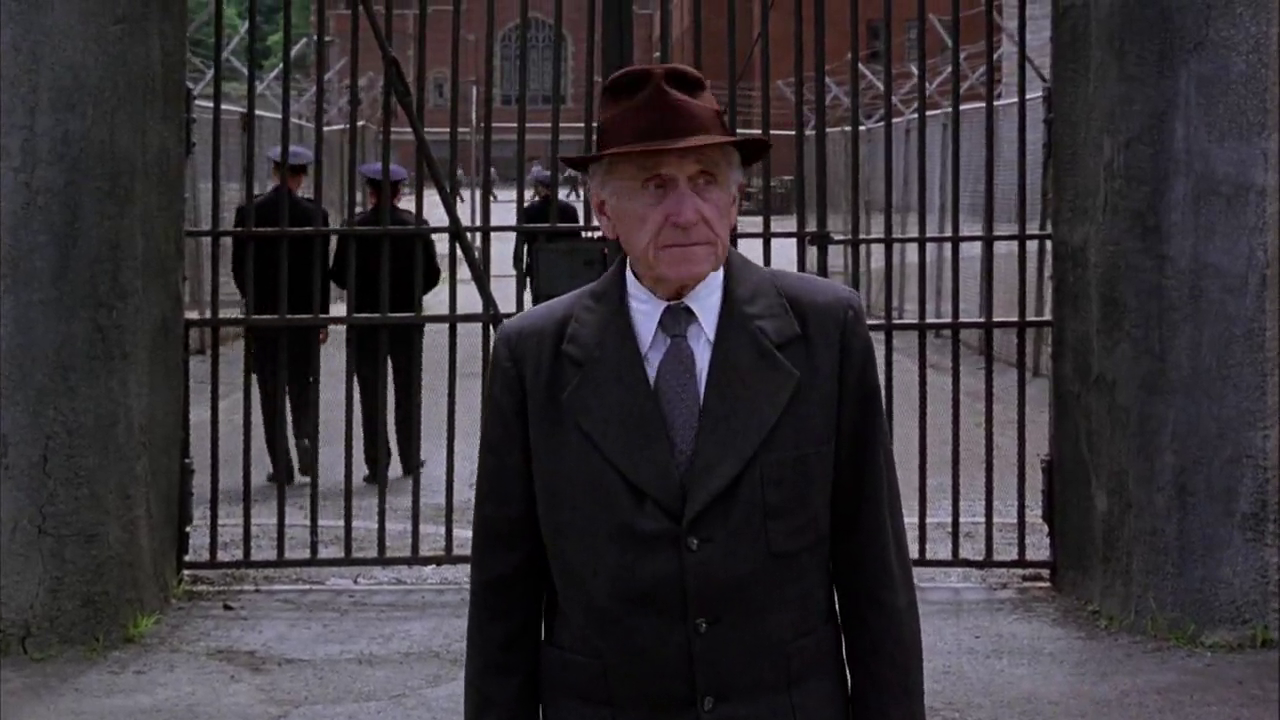 When Brooks first steps out of Shawshank, you already see the fear and hesitation on his face. He has no idea what he’ll do, or where he’ll go. The world had changed completely during his time in the prison that he no longer recognized it. This helped create a sense of fear and dread inside of him. He calls prison, “home”. The most important bit is when he says that he’s tired of being afraid all the time. So he decides to end that fear by taking his own life.
When Brooks first steps out of Shawshank, you already see the fear and hesitation on his face. He has no idea what he’ll do, or where he’ll go. The world had changed completely during his time in the prison that he no longer recognized it. This helped create a sense of fear and dread inside of him. He calls prison, “home”. The most important bit is when he says that he’s tired of being afraid all the time. So he decides to end that fear by taking his own life.
Later on in the movie, when Red is given parole, he echoes the same sentiments. There are differences, no doubt, but the way that the images and shots are repeated is extremely important.
When Red steps out of prison, the first thing you’ll notice is that for Brooks, the shot was from the outside, looking in. This reflected Brooks’ state of mind. For Red, the shot is from the inside, looking out. And there’s a smile on his face.
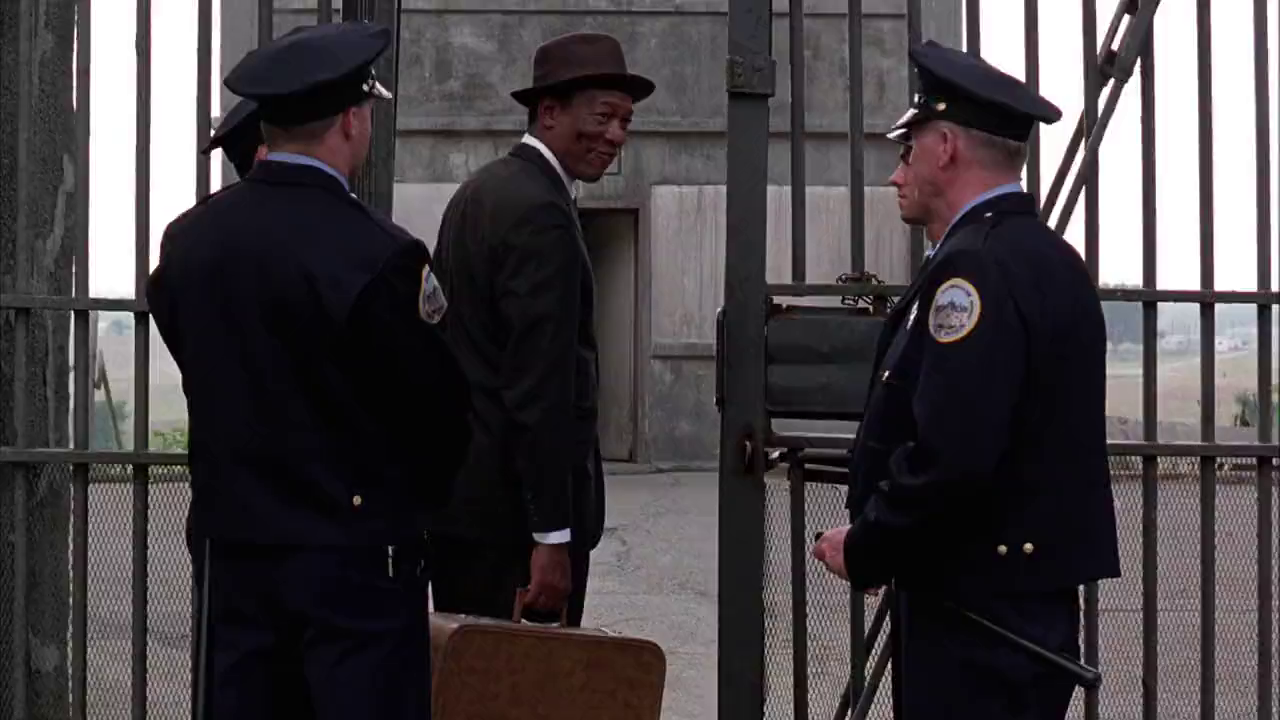 However, when the music starts playing, it’s the same song that was playing when Brooks went on parole. And when Red gets on the bus, he has that same fearful, uncertain expression on his face that Brooks had. The fear begins to sink in.
However, when the music starts playing, it’s the same song that was playing when Brooks went on parole. And when Red gets on the bus, he has that same fearful, uncertain expression on his face that Brooks had. The fear begins to sink in.
He’s placed in the same room as Brooks. He even sees the words “Brooks was here” scratched onto the beam above. That image creates an ominous mood for the audience. Suddenly they begin to wonder, “Will the same thing happen to Red?” The audience begins to worry. They reason, “He can’t! What about his promise to Andy?”
The worry continues to grow when we see Red at the same job as Brooks found himself in, and then even more so when Red stops in front of a store window to look at a set of guns on display.
Then Red himself starts to say, “No way I’m going to make it on the outside.” All he can think about are ways to break his parole—the same thoughts Brooks had when he contemplated robbing the grocery he worked at, and maybe even shooting the manager as a bonus.
“All I want is to be back where things make sense,” Red says, “where I won’t have to be afraid all the time.” The brilliance of this repeated imagery is that it builds up tension in the audience. Because they’ve seen this series of images, this same speech pattern, they feel like that same thing is going to happen to Red. Red, as he often expressed to Andy, is about to give up hope.
“Hope is a dangerous thing,” he told Andy.
And now, in this moment in the film, the imagery—and the stark similarity of it to Brooks’ own story—makes the audience assume the worst. That is, until Red finishes his thought-process with, “Only one thing stops me, a promise I made to Andy.”
Then everybody sighs in relief.
CONCLUSION
Three things repeating imagery does to help your story become ten times better than it originally is:
- It helps create a sense of wholeness to our plot. Because you have the same images, the same settings, repeated at the start and at the end of your story, the entire thing suddenly looks like it was well-planned and thought through. Your story becomes much more resonant because your audience and your characters find themselves back at the start, where they begin to wonder, “What has changed since we were last here?” This is the perfect moment to reveal character change.
- It foreshadows a possible ending for your characters. It shows your character the future that awaits him should he continue on the path that he’s on. Red knew it. He recognized that Brooks has been here before, in this same situation. He knew that if he didn’t do something, he would fall into a similar fate.
- It foreshadows a possible ending for your audience. I first found out about this technique from Brian McDonald’s Invisible Ink. In it he gives several examples of how this builds tension, fear, and worry in your audience. Many other great movies have used this technique, including Close Encounters, Finding Nemo, and Jurassic Park. This is a profound way to stir up the emotions in your comic book readers, and have them at the edge of their seats.
So as you go through the script for your webcomic or graphic novel, if there’s a chance or opportunity for you to use this technique, by all means DO IT!
